-
Posts
58 -
Joined
-
Last visited
Posts posted by daviseri
-
-
Hi. I have the same make and model of concertina 57 buttons. May I ask where you found a gig bag to fit it?
-
Accordion magic
roy whitely
And eventually I suppose this nova Tina. But I think it’s gonna be a while on that. And also a, sure the crane model will be on the back burner.
-
Beautiful instrument. I have a wheatstone Crane Aeola from Algar as well. Starts on Low F on each side. Now i am just saving money to get a midi version so i can practice at night without driving people crazy.
-
I am a crane player. This is tempting…
-
On 4/6/2023 at 6:36 AM, Theo said:
Do you have a design?
Can you elaborate on your question?
Do you mean you can make them and are asking about the dimensions of my instrument?
-
Wondering if i could have some made. Is that possible to do without being there in person?
I play a 57 button wheatstone crane duet.
-
THIS WORKS LIKE A DREAM!!!!
Actually this will be a game change for me and playing the concertina.
When I’m not traveling, I like to take a couple walks a day and now I can take my concertina with me and work on songs or parts of songs (memorizing, or even listening to loops on the Anytunes App) and get exercise, too.
It’s very comfortable to play with this harness. Sturdy and no drilling.
I added a little extra bit where I put a this strip of neoprene rubber under the Velcro to help with grip, just in case. I haven’t had any slippage, but I guess one could also put a thin pice of strong string that attached to the hand strap to the harness, just in case.
THANK YOU SO MUCH FOR SHARING THIS>
-
I am in the process of making one of these. So excited.
Curious if anyone else who has done this has any thoughts about friction of the bellows and the front of your body?
are you holding it out from your body or do you stabilize it on your body?
-
I’m working on a 57 k crane. But feel I would do well to have a mentor I might meet with from time to time.
otherwise I’m just guessing and trying to figure it out myself. Also it motivates me if I have to meet someone from time to time
I have tunes I’m working on and want some counsel on mellows control, Chris’s accompaniment. And exercises I should be doing. I have a crane tutor. Which is helpful. But sometime less than inspiring.
Best
Eric
-
On 11/13/2022 at 2:06 AM, alex_holden said:
It is probably possible but not as easy as just pulling reeds out and pushing them into different chambers, because with traditional English style concertinas the reed frames are individually fitted to their slots, and there are multiple frame sizes. You will probably need to do some reed pan and/or frame adjustment to get them to fit in their new locations. Also it's quite likely that after moving the reeds to different chambers a lot of them will need fine tuning. If you later wanted to reconfigure it back to a standard Crane it would be the same process again. Not to discourage you if you're keen on converting an instrument to 5CC, but don't expect to be able to easily switch back and forth.
Super helpful to know. Thanks, Alex
 Another user who actually had the conversion done confirmed this. So seems possible, but makes the crane a little less quality. Perhaps better to build from scrape. I’ll private Message you about that. Really appreciate you chiming in on this.
Another user who actually had the conversion done confirmed this. So seems possible, but makes the crane a little less quality. Perhaps better to build from scrape. I’ll private Message you about that. Really appreciate you chiming in on this.
-
Still drooling to see photos

-
Ok. I just saw the 5cc layout thread and drew out that layout to visualize it and it’s even better in terms of consistency.
Not sure how it feels to play, but makes a lot of sense for figuring your way around the board. So many consistent patterns. Very very intrigued.
I’m wondering if I would be able to just switch out the order of the reeds, or if I’d have to have someone do some rebuilding in side.
I’d love to know someone who’s been playing the 5cc layout for a while.
-
Hi, my name is Eric. I’m a novice crane duet player, who is working on music theory and learning to play my instrument. I’ve seen discussions about moving notes around on the crane. And did a layout to see what it would look like. I’m assuming that the crane layout was created to make life easier for people who didn’t use many sharps or flats. Since the sharps and flats are on the outside.
But there was a discussion someplace on concertina.net about different layouts. I could not get it out of my head as I’m studying theory a bit and realize how much counting is to be done to figure out chords. so I thought I’m make a chart to see what it looked like and saw that if it’s possible to re-order the keys so that it’s always consistent on each column.
It seems to me, then, that the new layout would keep all the chord fingerings the same?
is this a more logical system according to theory?
To have the same pattern ?
e.g.
the note above is always a perfect 4th.
The chords fingering patterns would be consistent on each column.
Are there other systems with the same layout?
has anyone re-ordered the reeds in their crane to do this?
(Im assuming this could be done by just moving the reeds? Is that true?)
would this make music theory easier repositioned this way?
looking forward to hearing thoughts.
3 photos attached.
first is how it is on my crane.
second is how the notes would be repositioned.
third shows the consistent patterns of semitones going up the rows.
(Also- my box is already a bit unusual in that it goes down to F on each side.)
Best,
Eric
-
I did have some 3d printed..
they work, but have a bit more friction than the nickel plated originals. I used brown paper to sand them down a bit. Eventually I hope to replace with proper ones, but they have kept it playable.
-
Quite late to respond to this, but yes, I found that when I was playing the chords on the left side, and melody on the right side, the bass (left side) overpowered the melody too much for me.
For me, I found that the leather gave either side a warmer tone. So the right hand side is just for tone and the left hand side is for tone and volume.
-
-
NICE!
-
Yes, I would also love to see some photos, Mike. I have a 57 key Wheatstone. Can’t imagine the size of 80!
-
I’m a new player and wondering if there are stretches or things players do before or after to keep in good working order?
-
A little shout out to Robert Gaskins and thanks for his great article on how to create and install baffles to sweeten the sound, reduce volume and balance the sides of the concertina.
I’m happy to report that it worked very well on first try thanks to his very detailed instructions.
I found that the accoustical fabric (like low pile ribbed carpet) was just touching the pads a bit when I depressed the button, so I used my electric beard shaver to trim down the fabric a bit in those areas and resolved the issue.)
It was so much fun to do the project and very good experience to be less intimidated to open up the concertina and work on it make repairs.
I’ve also had a button or two break since I’ve owned the concertina and in a pinch had some 3-D printed, which are working nicely after I sanded them.
pics below!
-
Thank you so much for your reply, Don.
I’ve gone back into the article and realized he had some text about it that makes sense.
Basically i’ll Use some 1/8” in. Foam tape to make a kind of bushing board like barrier around the buttons.
In the case of a wooden-ended instrument without a bushing board, there is no way to cause the baffle to fit close to the bushing board to create a narrow slit. So for these instruments, more tape is needed. I cut more of the 1/8" by 1/4" bits of tape, and assemble nearly a solid line of these along the strip of wood outside the buttons--the part overlapped by the baffle. These bits don't need to be butted end-to-end, but I close up about 85% of the line around the buttons. This reduces the leakage around the buttons to someplace close to that experienced with a bushing board--much reduced, but far from zero. This may take another 48 bits of tape, for a larger instrument.
-
Hi.
Anyone here made leather baffles?
I have a technical question-
I am making some leather baffles for a wooden Wheatstone Crane following the article of Robert Gaskins on concertina.net
But i’ve Run across a snag.
in Robert’s article he cuts the template so that the leather fails snugly between the edges of the end piece and the bushing board.
(See 2 attached photos of a metal end with bushing board and a leather baffle surrounding the bushing board.)
My Wheatstone Crane’s wooden end does not have a bushing board. (Photo of the ebony wooden end.)
Can I still make working baffles without a bushing board?
Do I have to make a bushing board as well?
Best,
Eric
-
Has anyone tried 3D printing replacement buttons?
if so- any tips you’ve learned?
Was it succesful?
Best,
Eric
-
I had a button that would catch sometimes, so I opened up the instrument to look at the mechanics.
(See picture).
I found that the small end of the peg was not sitting in the hole anymore and was moving around so that it catches the edge of the hole.
Now- I don’t believe the button is any shorter than it used to be..
So why does it suddenly not fit into the hole?
Does it have to do with the felt that wraps around the metal lever that goes through the button to operate the pad?
Did the lever move to a higher position so that the end of the button peg can’t reach the hole?
Thoughts?
Anybody ever deal with this?
Best,
Eric



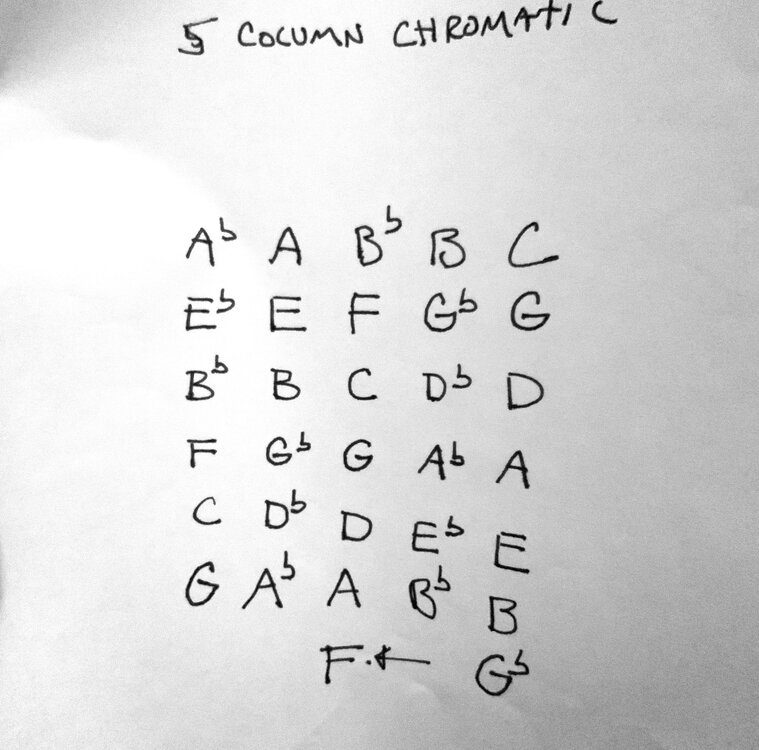
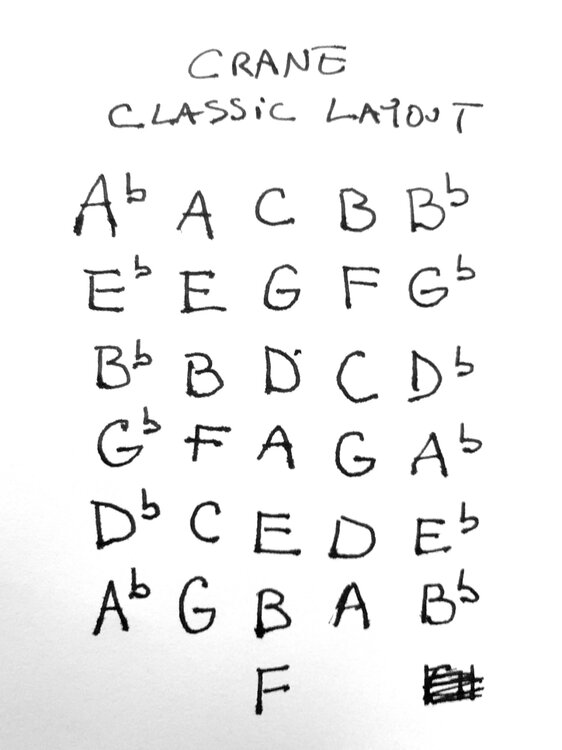
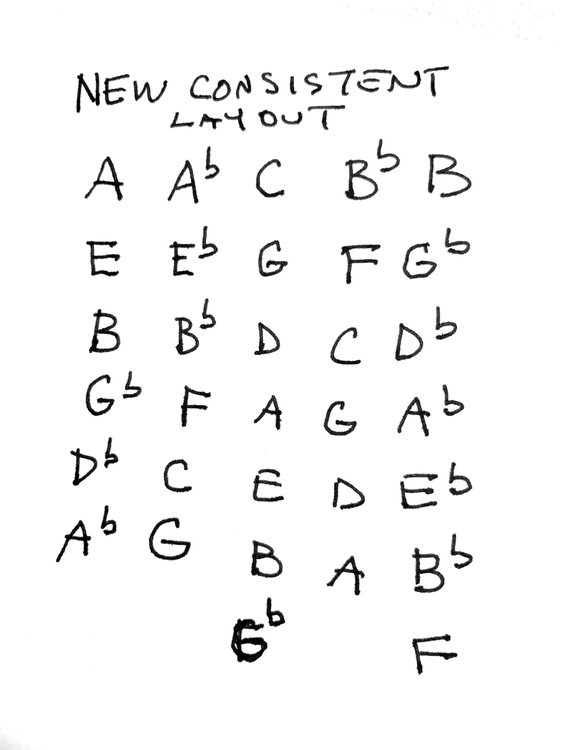
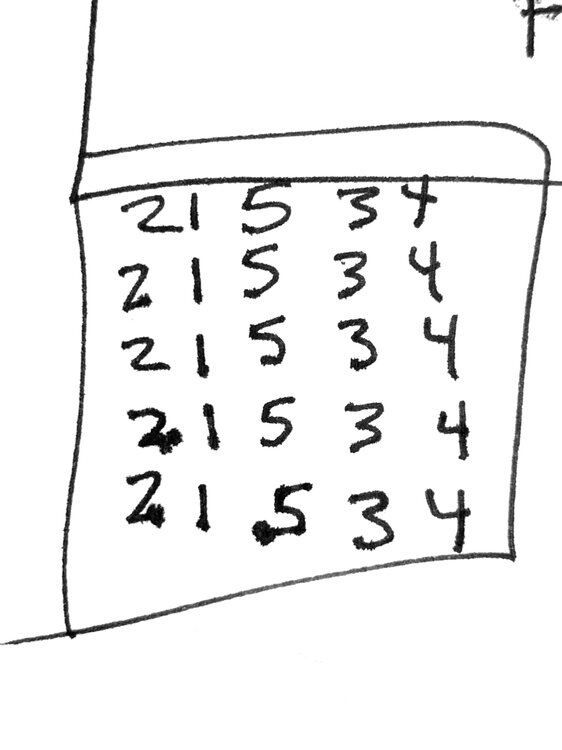

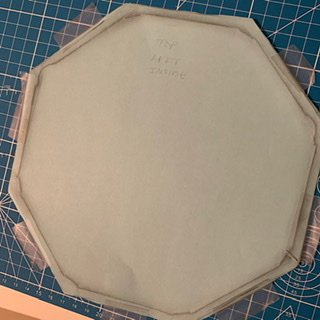
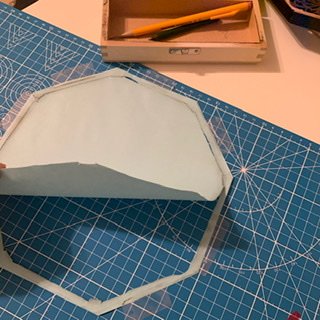





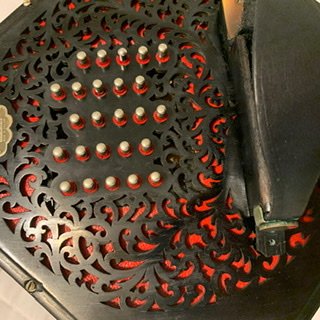







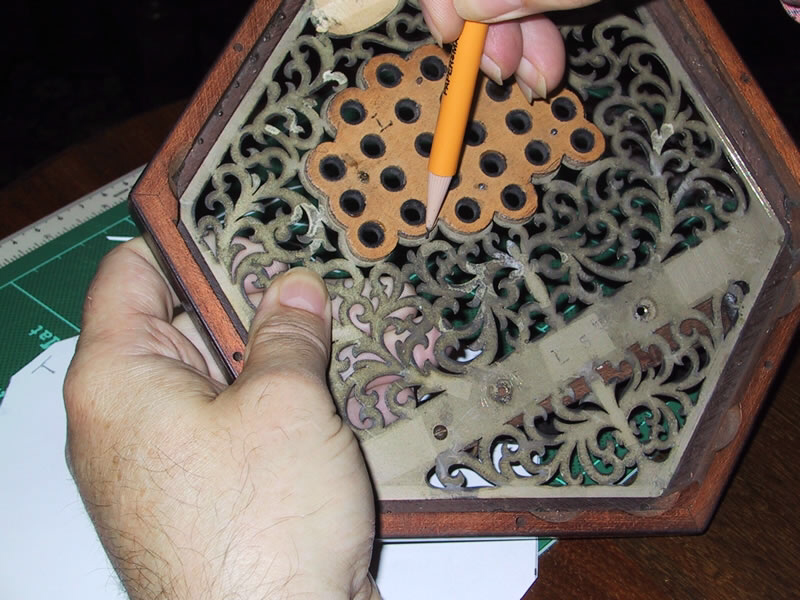
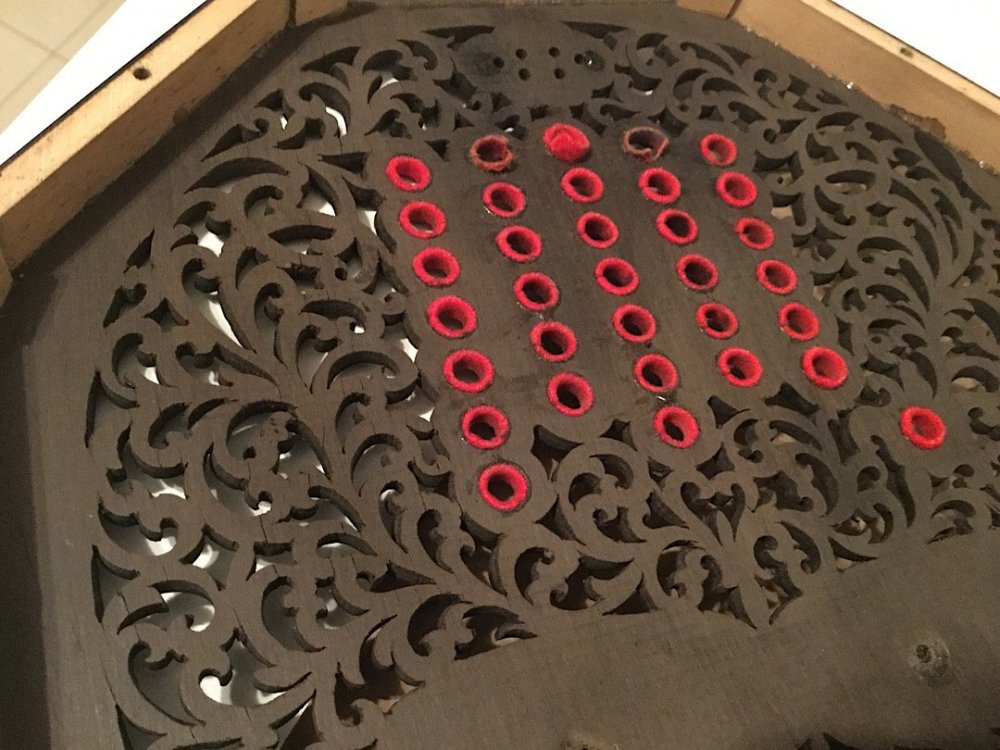

Has anyone ever seen an octagonal concertina case?
in General Concertina Discussion
Posted
I see there are beautiful hexagonal ones.
wondering if any were ever made for aeolas. I love the idea of having a hard case that o could easil strap on my shoulder.
photo is of Alex Holden’s latest hexagonal case